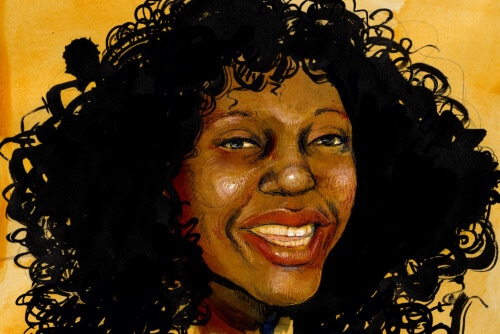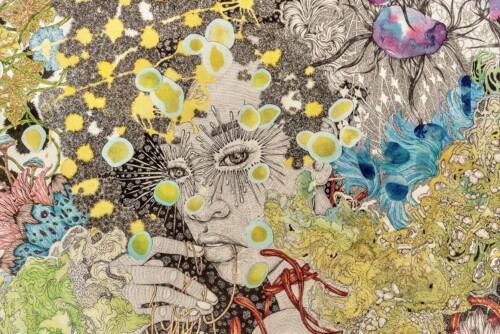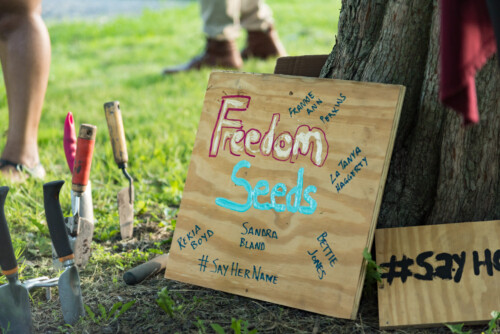Jay Toole, director of the Shelter Project at Queers for Economic Justice (QEJ), hero in the queer community, and legend in the NYC homeless shelter system, knows more about queer homelessness than anyone else in the city, and probably the country. Of medium height and build; hair sheared short to reveal the shape of her head and strong identification as butch; sporting an informal uniform of t-shirt, cargo pants and sneakers that epitomize her direct and no-barriers approach; Jay is quick to laugh, flirt, and let you know if your words sound like meaningless policy banter. Her focused energy blends with an easy-going playfulness and what I consider to be a truly unique love of people. Jay is thoughtful, warm, empathetic, inclusive, and generous with her time. She is better about staying in touch than anyone else I know in NYC; she believes in community and readily embraces community-building technology from Facebook and Myspace to Twitter and texting. And, at age 61, she just as eagerly wraps her arms around the latest in toys—an afternoon tucked away with her Playstation and Wii serves as ideal downtime.
But on this early Saturday morning in July sitting by the open kitchen window of the rent-stabilized apartment I share with my partner, Jay looks very tired and uncertain. We both know the gentle, warm breeze and peaceful surroundings will be short-lived. In a matter of hours the temperature gauge will soar and Jay’s cell phone will begin to burn a hole in the ozone as texts and calls pour in from the underbelly of the queer community. Across the city queers will be reaching out, all desperate to connect with the resource they know as Superbutch, and all of whom have one thing in common: They are poor. “You have to keep a hand out there,” Jay explains, “because someone will always reach for it.” The work of organizing support groups and training workshops for queer residents of the NYC homeless shelter system since 2004 has positioned her as the main and sometimes sole resource for queers who struggle with all aspects of homelessness and poverty. Jay paused, cutting short the last drag on her cigarette, her eyes snapping clear in a weave of urgency and love: “There are thousands of us in the shelters, and no one really knows, the community doesn’t really know, and people need help.” Throughout the country there are varying systems of homeless shelters and temporary housing, but NYC is the only location where a legal right to shelter exists.1 Currently, the New York City Department of Homeless Services (DHS) directly runs or administers under contract more than 200 shelters serving thousands of people each day within two main categories of homeless people: single adults and families.2
QEJ’s Shelter Project
The work of the Shelter Project at QEJ is focused on the single adult shelter system. Jay notes their accomplishments of the past five years with quiet pride, starting with the victory for homeless transgender people. It was a protracted process that involved building coalition with and securing the public support of other LGBT organizations; meeting with directors and staff at numerous shelters; meeting with local government leaders and representatives repeatedly; and it eventually resulted in the piloting of a transgender policy that provides homeless individuals of trans experience the right to self-determined placement through either the men’s or women’s side of the shelter system.3 While acknowledging the policy is just a first step in addressing the particular safety concerns that face homeless New Yorkers of trans experience, Jay notes: “We need to do more to let people know this policy exists. There should be notices posted in every shelter in the system because there are still so many trans people who are placed in shelters where they are not safe, and they don’t know they can choose.” Jay views the process as a win, both for trans homeless rights and for the broader queer community. This was an example of creating a campaign about an aspect of queer poverty and facilitating its development to include some of the mainstream queer organizations.
Similarly, QEJ had a major victory with regard to homeless domestic partners. In 2007, QEJ and collaborating organizations celebrated when New York City’s Department of Homeless Services (DHS) reinstituted and formalized a policy allowing couples registered as domestic partners to secure emergency shelter as families in the same way as married couples. In addition to being a major step forward and a great victory for the collaborative effort between the antipoverty and queer communities, the negotiations illustrated the type of insight and leadership QEJ could provide. The problem initially surfaced when DHS changed a long-standing policy of accepting domestic partnership certificates as proof of family. When challenged, the administration offered a compromise position of accepting domestic partnership certificates from same-sex couples only (as an acknowledgement of the inability of same-sex couples to legally marry). QEJ stood firm with a coalition of queer and antipoverty organizations until the policy was amended to provide for all families. Consequently, the new policy grants “family status” to homeless adults who have other family relationships (e.g., grandparent and grandson or granddaughter; siblings) who have resided together for six of the previous twelve months (thus expanding recognition of “family” beyond merely couples). For more than two years, QEJ led a coalition of organizations to work on this issue—work that would never have had to be done if, over a decade earlier, gay activists had thought to include the Department of Homeless Services on the list of city agencies covered by the domestic partnership laws they were then creating. But at the time that the historic domestic partnerships were being created in NYC, homelessness was forgotten (as it all too often is by the LGBT community), so QEJ had to work for years to get the DHS added to a law that had already governed other city agencies for years.
This campaign to ensure homeless queer couples have the right to stay together in the shelter system provided an opportunity to involve some mainstream queer organizations. It necessitated an exploration and unraveling of NYC’s domestic partnership policy, which Jay considers an advancement of queer rights both within and outside the queer community. “When the domestic partnership policy was initially negotiated, nobody from our community even thought about homelessness and what it could mean for homeless queers. So this gave our own community leaders a chance to make up for leaving people out.”
While acknowledging that such policy victories have the potential to help countless homeless queers, Jay is more proud of other things. She does not miss a beat when she declares that the number one accomplishment of the shelter project is the development of support groups for queers in the shelter system. During the past five years Jay and her team of volunteers have organized approximately 70 support groups in 35 shelters and hosted several “know your rights” training workshops for shelter residents at QEJ. Approximately 1,600 discrete individuals have attended support groups or training workshops. The groups are facilitated by volunteers but run collectively. The shelter residents determine the main agenda of every meeting and regularly communicate to Jay and QEJ volunteers how important the groups are. “So many times,” observes Jay, “I have heard people say, ‘This is the first time that I am able to say who I am and this group helped me to be able to do that.’” She feels strongly that the basic sense of safety and unity the groups provide facilitate what is often the first experience of queer community for queer shelter residents.
Jay definitely feels the pressure of being thought of as a resource for queer homeless people:
It’s scary: Am I giving the right advice, giving people what they really need, making the right connections? I always tell people that I cannot get them housing, and I tell all the volunteers to do the same, but we can do a lot. We can help connect people back to whatever community they need to be with: queer, religious, family, or friends. I can’t not answer my phone. I feel so guilty when I turn off my phone at night. I have no social life. All I ever do is talk about the work I do in the shelters. And when I hear other people talking about the work of QEJ, they are always talking about my work in the shelters and it’s a lot of pressure. I feel like I always have to be on.
- In response to the wave of homelessness that emerged in the late 1970s, the Coalition for the Homeless brought a class action lawsuit on behalf of all homeless men against the city and state called Callahan v. Carey, arguing that a constitutional right to shelter existed in New York. In August 1981, after nearly two years of intensive negotiations, Callahan v. Carey was settled as a consent decree that established a right to shelter for all homeless men in New York City. In 1983 the right to shelter was extended to homeless women under the Eldredge v. Koch lawsuit, and later to homeless families with children by the McCain v. Koch lawsuit, filed by the Legal Aid Society. See “The Callahan Legacy: Callahan v. Carey and the Legal Right to Shelter” on the website of the Coalition for the Homeless. [↩]
- NYC Department of Homeless Services, Emerging Trends in Client Demographics (PDF). (New York: NYC Department of Homeless Services). [↩]
- New York City Department of Homeless Services, Procedure No, 06-1-31: Transgender/Intersex Clients (New York: New York City Department of Homeless Services, 2006). [↩]




